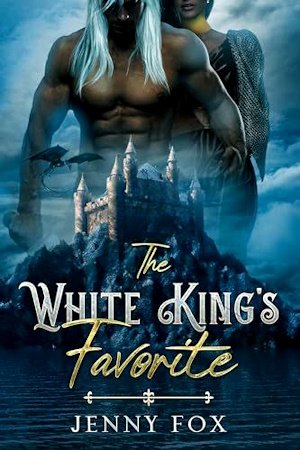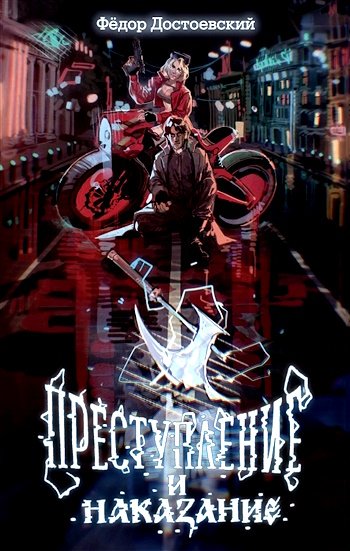She never did, but years later Jandali saw his
Steve Jobs by Walter Isaacson 341
relationship to Jobs mentioned online. (A blogger noticed that Simpson had listed Jandali as her father in a reference book and figured out he must be Jobs’s father as well.) By then Jandali was married for a fourth time and working as a food and beverage manager at the Boomtown Resort and Casino just west of Reno, Nevada. When he brought his new wife, Roscille, to visit Simpson in 2006, he raised the topic. “What is this thing about Steve Jobs?” he asked. She confirmed the story, but added that she thought Jobs had no interest in meeting him. Jandali seemed to accept that. “My father is thoughtful and a beautiful storyteller, but he is very, very passive,” Simpson said. “He never contacted Steve.”
Simpson turned her search for Jandali into a basis for her second novel, The Lost Father, published in 1992. (Jobs convinced Paul Rand, the designer who did the NeXT logo, to design the cover, but according to Simpson, “It was God-awful and we never used it.”) She also tracked down various members of the Jandali family, in Homs and in America, and in 2011 was writing a novel about her Syrian roots. The Syrian ambassador in Washington threw a dinner for her that included a cousin and his wife who then lived in Florida and had flown up for the occasion.
Simpson assumed that Jobs would eventually meet Jandali, but as time went on he showed even less interest. In 2010, when Jobs and his son, Reed, went to a birthday dinner for Simpson at her Los Angeles house, Reed spent some time looking at pictures of his biological grandfather, but Jobs ignored them. Nor did he seem to care about his Syrian heritage. When the Middle East would come up in conversation, the topic did not engage him or evoke his typical strong opinions, even after Syria was swept up in the 2011 Arab Spring uprisings. “I don’t think anybody really knows what we
Steve Jobs by Walter Isaacson 342
should be doing over there,” he said when I asked whether the Obama administration should be intervening more in Egypt, Libya, and Syria. “You’re fucked if you do and you’re fucked if you don’t.”
Jobs did retain a friendly relationship with his biological mother, Joanne Simpson. Over the years she and Mona would often spend Christmas at Jobs’s house. The visits could be sweet, but also emotionally draining. Joanne would sometimes break into tears, say how much she had loved him, and apologize for giving him up. It turned out all right, Jobs would reassure her.
As he told her one Christmas, “Don’t worry. I had a great childhood. I turned out okay.”
Lisa
Lisa Brennan, however, did not have a great childhood. When she was young, her father almost never came to see her. “I didn’t want to be a father, so I wasn’t,” Jobs later said, with only a touch of remorse in his voice. Yet occasionally he felt the tug. One day, when Lisa was three, Jobs was driving near the house he had bought for her and Chrisann, and he decided to stop. Lisa didn’t know who he was. He sat on the doorstep, not venturing inside, and talked to Chrisann.
The scene was repeated once or twice a year. Jobs would come by unannounced, talk a little bit about Lisa’s school options or other issues, then drive off in his Mercedes.
But by the time Lisa turned eight, in 1986, the visits were occurring more frequently. Jobs was no longer immersed in the grueling push to create the Macintosh or in the subsequent power struggles with Sculley. He was at NeXT, which was calmer, friendlier, and headquartered in Palo Alto, near where Chrisann and Lisa lived. In addition, by the time she was in third grade, it was clear that Lisa was a smart and artistic kid, who had already been singled out by her teachers for
Steve Jobs by Walter Isaacson 343
her writing ability. She was spunky and high-spirited and had a little of her father’s defiant attitude. She also looked a bit like him, with arched eyebrows and a faintly Middle Eastern angularity. One day, to the surprise of his colleagues, he brought her by the office. As she turned cartwheels in the corridor, she squealed, “Look at me!”
Avie Tevanian, a lanky and gregarious engineer at NeXT who had become Jobs’s friend, remembers that every now and then, when they were going out to dinner, they would stop by Chrisann’s house to pick up Lisa. “He was very sweet to her,” Tevanian recalled.
“He was a vegetarian, and so was Chrisann, but she wasn’t. He was fine with that. He suggested she order chicken, and she did.”
Eating chicken became her little indulgence as she shuttled between two parents who were vegetarians with a spiritual regard for natural foods.
“We bought our groceries—our puntarella, quinoa, celeriac, carob-covered nuts—in yeasty-smelling stores where the women didn’t dye their hair,” she later wrote about her time with her mother. “But we sometimes tasted foreign treats. A few times we bought a hot, seasoned chicken from a gourmet shop with rows and rows of chickens turning on spits, and ate it in the car from the foil-lined paper bag with our fingers.” Her father, whose dietary fixations came in fanatic waves, was more fastidious about what he ate. She watched him spit out a mouthful of soup one day after learning that it contained butter. After loosening up a bit while at Apple, he was back to being a strict vegan. Even at a young age Lisa began to realize his diet obsessions reflected a life philosophy, one in which asceticism and minimalism could heighten subsequent sensations. “He believed that great harvests came from arid sources, pleasure from restraint,” she noted. “He knew the
Steve Jobs by Walter Isaacson 344
equations that most people didn’t know: Things led to their opposites.”
In a similar way, the absence and coldness of her father made his occasional moments of warmth so much more intensely gratifying. “I didn’t live with him, but he would stop by our house some days, a deity among us for a few tingling moments or hours,” she recalled. Lisa soon became interesting enough that he would take walks with her. He would also go rollerblading with her on the quiet streets of old Palo Alto, often stopping at the houses of Joanna Hoffman and Andy Hertzfeld. The first time he brought her around to see Hoffman, he just knocked on the door and announced, “This is Lisa.” Hoffman knew right away. “It was obvious she was his daughter,” she told me. “Nobody has that jaw. It’s a signature jaw.”
Hoffman, who suffered from not knowing her own divorced father until she was ten, encouraged Jobs to be a better father. He followed her advice, and later thanked her for it.
Once he took Lisa on a business trip to Tokyo, and they stayed at the sleek and businesslike Okura Hotel.
At the elegant downstairs sushi bar, Jobs ordered large trays of unagi sushi, a dish he loved so much that he allowed the warm cooked eel to pass muster as vegetarian. The pieces were coated with fine salt or a thin sweet sauce, and Lisa remembered later how they dissolved in her mouth. So, too, did the distance between them. As she later wrote, “It was the first time I’d felt, with him, so relaxed and content, over those trays of meat; the excess, the permission and warmth after the cold salads, meant a once inaccessible space had opened. He was less rigid with himself, even human under the great ceilings with the little chairs, with the meat, and me.”
But it was not always sweetness and light. Jobs
Steve Jobs by Walter Isaacson 345
was as mercurial with Lisa as he was with almost everyone, cycling between embrace and abandonment.
On one visit he would be playful; on the next he would be cold; often he was not there at all. “She was always unsure of their relationship,” according to Hertzfeld. “I went to a birthday party of hers, and Steve was supposed to come, and he was very, very, late. She got extremely anxious and disappointed. But when he finally did come, she totally lit up.”
Lisa learned to be temperamental in return. Over the years their relationship would be a roller coaster, with each of the low points elongated by their shared stubbornness. After a falling-out, they could go for months not speaking to each other. Neither one was good at reaching out, apologizing, or making the effort to heal, even when he was wrestling with repeated health problems. One day in the fall of 2010 he was wistfully going through a box of old snapshots with me, and paused over one that showed him visiting Lisa when she was young. “I probably didn’t go over there enough,” he said. Since he had not spoken to her all that year, I asked if he might want to reach out to her with a call or email. He looked at me blankly for a moment, then went back to riffling through other old photographs.
The Romantic
When it came to women, Jobs could be deeply romantic. He tended to fall in love dramatically, share with friends every up and down of a relationship, and pine in public whenever he was away from his current girlfriend. In the summer of 1983 he went to a small dinner party in Silicon Valley with Joan Baez and sat next to an undergraduate at the University of Pennsylvania named Jennifer Egan, who was not quite sure who he was. By then he and Baez had realized that they weren’t destined to be forever young together,
Steve Jobs by Walter Isaacson 346
and Jobs found himself fascinated by Egan, who was working on a San Francisco weekly during her summer vacation. He tracked her down, gave her a call, and took her to Café Jacqueline, a little bistro near Telegraph Hill that specialized in vegetarian soufflés.
They dated for a year, and Jobs often flew east to visit her. At a Boston Macworld event, he told a large gathering how much in love he was and thus needed to rush out to catch a plane for Philadelphia to see his girlfriend. The audience was enchanted. When he was visiting New York, she would take the train up to stay with him at the Carlyle or at Jay Chiat’s Upper East Side apartment, and they would eat at Café Luxembourg, visit (repeatedly) the apartment in the San Remo he was planning to remodel, and go to movies or (once at least) the opera.
He and Egan also spoke for hours on the phone many nights. One topic they wrestled with was his belief, which came from his Buddhist studies, that it was important to avoid attachment to material objects. Our consumer desires are unhealthy, he told her, and to attain enlightenment you need to develop a life of nonattachment and non-materialism. He even sent her a tape of Kobun Chino, his Zen teacher, lecturing about the problems caused by craving and obtaining things.
Egan pushed back. Wasn’t he defying that philosophy, she asked, by making computers and other products that people coveted? “He was irritated by the dichotomy, and we had exuberant debates about it,”
Egan recalled.
In the end Jobs’s pride in the objects he made overcame his sensibility that people should eschew being attached to such possessions. When the Macintosh came out in January 1984, Egan was staying at her mother’s apartment in San Francisco during her winter break from Penn. Her mother’s dinner guests
Steve Jobs by Walter Isaacson 347

























